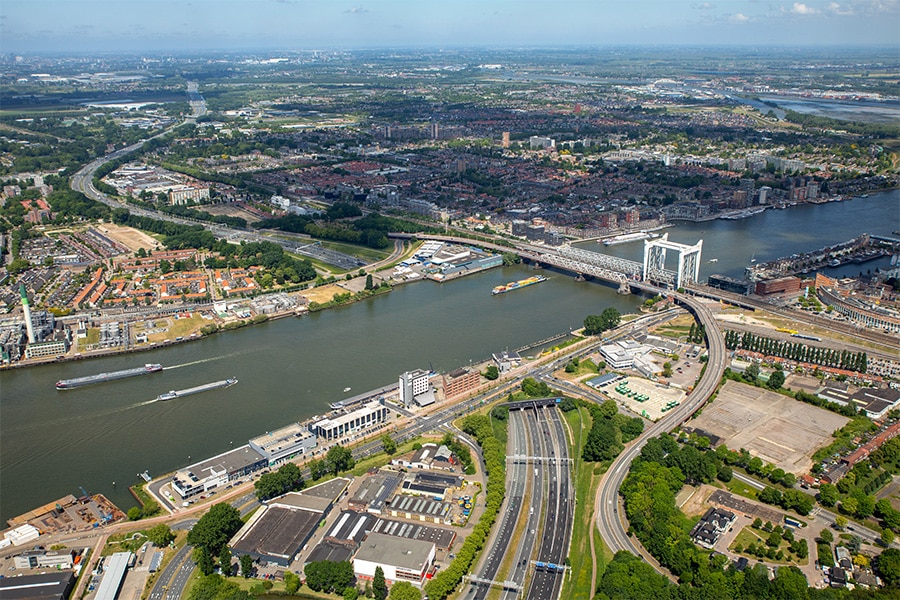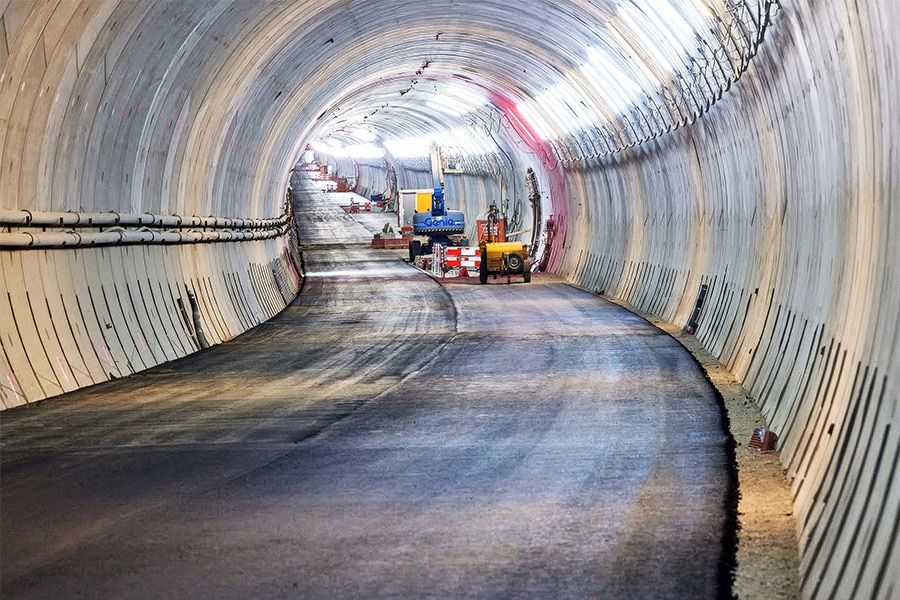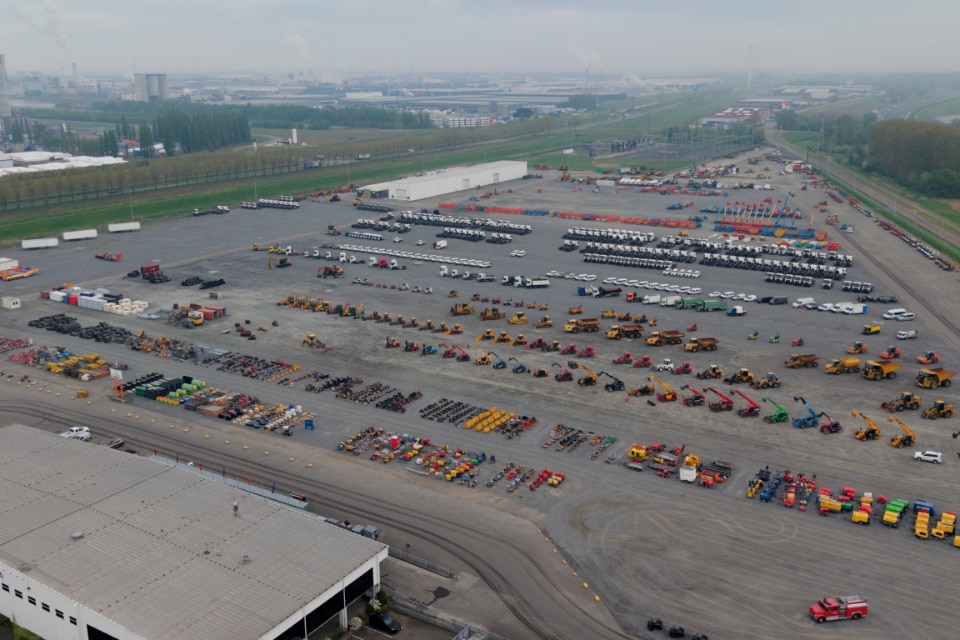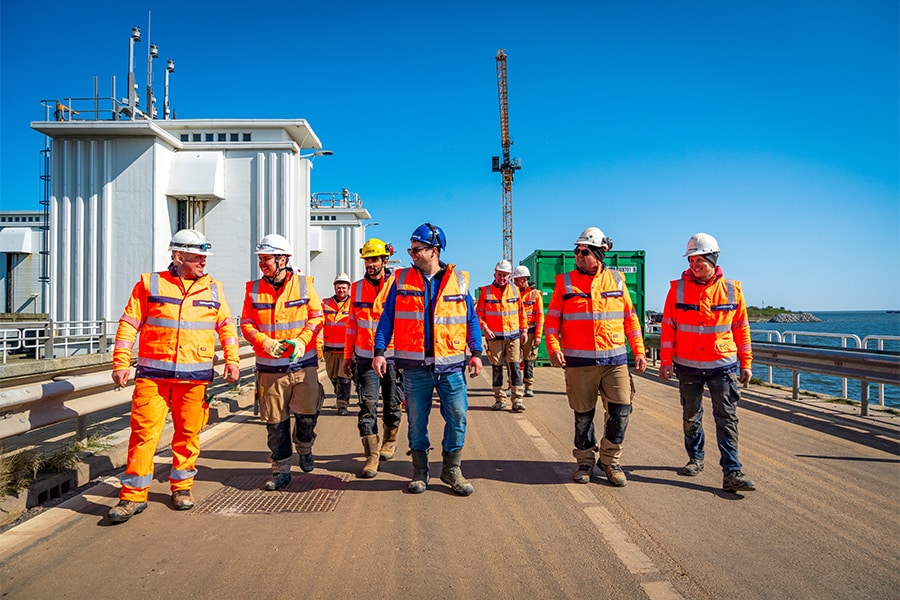
Concrete is the basis for living, working and well-being
Anno 2021, concrete is part of the sustainability debate, with critics often commenting negatively on CO2-emissions associated with the endlessly applicable building material. Betonhuis is working hard to highlight the sustainable nature that can be attributed to concrete. We speak with Ron Peters, director of Betonhuis.
"We have been telling people since the founding of Concrete House that the CO2-footprint of concrete should be seen in the right context," Peters opens the conversation. "After water, concrete is the most consumed product in the world. Its share of global CO2-emissions that concrete has is because of its enormous volume, which is 7% of emissions worldwide. Consider then for Europe a share applies from 3% to 5% and we in the Netherlands are at 1.6%."
Netherlands scores better
So why do we score better in the Netherlands? Peters: "Because we are traditionally pioneers. We look for innovations. Volume-wise we may be small, but in terms of knowledge, innovation and application we are far ahead. For example, we also have more precast concrete in the Netherlands than in other countries. We dare to experiment with new concrete mixtures and also get the space to test them in practice. The Betonakkoord for example is now almost 3 years further and people in the industry realize that the Netherlands can benefit from it. Sustainability in our industry has been going on for years and the opportunities of the Concrete Accord should be seen". We bear this out. "

Mission and vision recalibrated
Concrete House represents seven sectors that each have their own interests and a common interest. So how do you get "the noses in the same direction"? Peters sees that task as one of the great merits of Betonhuis. "That is exactly why we are here. Working together is the key to success and by bringing the parties involved together, sharing knowledge and stimulating innovation -and tackling it together- we get where we need to be. However, in our role as pioneers, we need to grow with all the changes around us. For that reason, we have recalibrated our mission and vision. We believe that we cannot do without concrete, since concrete plays a major role in living, working and welfare and thus prosperity in general. In doing so, we strive for the lowest possible environmental impact. Our strategy is to help the Netherlands achieve its climate target. By means of webinars (11 in total, see box) we explain the action perspectives. These include things like dealing with alternatives such as geopolymers and delayed hardening. We look at everything at the application level."
Suffering from a 'braking head start'
Within the Concrete Agreement, there is matchmaking. Peters explains, "When a new application is made, we see which party dares to apply it.
We consider whether the risks are insurable and who should or must bear those risks. A balance is sought between availability of raw materials, technical applicability, constructive safety and environmental benefit." How do you ensure that an innovation is actually picked up, once approved? Peters: "Once an innovation becomes mainstream, the market naturally follows suit. If you are in the lead with an innovation, you always suffer from a 'braking lead.' The industry has been working for years to become more sustainable and environmentally friendly. It is our common, moral duty to continue to become more sustainable."
There is also much to gain logistically. For Betonhuis, it is obvious that logistics with the smallest CO2-emissions. "We distinguish plants that make concrete products, fixed concrete plants and mobile concrete plants. Supply by ship is preferred, if possible. With a large ship, you save up to 140 trucks coming and going. If you can build a concrete batching plant temporarily for a large project, this will be an immediate benefit. Pragmatic handling of transport is the motto. Furthermore, pragmatism is also important in product selection in construction. We are not "concrete evangelists. If a building material has more added value than concrete in a situation, you have to choose it, if it is more sustainable. We also advise on that; after all, we know our own product well. The goal is to meet the climate target."

Refocus and have bread-need discussions
We speak with Jan de Koning of De Jong Beton. He and three working groups at Betonhuis are investigating how the composition of concrete can be made more sustainable. De Jong himself processes clean concrete into aesthetic concrete elements, called "architectural concrete. "We have to see concrete as an artificial rock. The composition with cement of limestone was a choice of the time. A snapshot in time, a choice based on ignorance. Today we know that limestone is CO2 stores and, when burned, releases this again. More than half of limestone is CO2! That really has to change anno 2021. We are breaking down the wrong mountains with limestone. That's why refocusing is important, discussion is needed. We need to redefine this 'rock science' and we are doing this in three working groups. In them, we are looking at how to optimize cement, by needing less cement, we are looking at alternative binders, such as geopolymers, and we are reevaluating aluminum cement. How can we make strong concrete with it? To get a good picture, we have enlisted the help of a concrete technologist, who visits factories to look and give advice, and there is an intensive partnership with universities. Collaboration is becoming the norm! Our goal? We want to get to 100 kg CO2 per cubic meter of concrete. That would be a nice reduction."

'Our health is underground'
Betonhuis has several campaigns underway, including "Transparent Concrete" and "Our Health is Under the Ground," the second of which deals with concrete sewers. Hans Mascini, director of Kijlstra Beton, is associated with Betonhuis for the sewerage sector. He says: "People should realize that sewers have made the greatest contribution to the life expectancy of human beings. The ancient Romans already had concrete sewers. After the fall of the Roman Empire, the technology fell into oblivion for a while, with all its consequences. Looking at the Middle Ages, open sewers, or no sewers, caused disease outbreaks. So closed sewers are vital, and concrete made this possible. The challenge now is to see how we can make concrete sewers even more sustainable. That's a whole other discussion to have, because extreme demands are placed on the performance of sewer concrete. Chemical resistance and fluid impermeability are vital. We cannot afford to experiment with geopolymer concrete for sewers if we cannot guarantee safety in advance. We will do this only if explicit agreements have been made with the client. Of course we will hook into the sustainability process, even if the sustainability tests take longer than usual. When we put concrete in the ground, we don't want to have to dig it up again after 10 years with regret. It becomes a matter of doing everything very controlled and careful. The standard describes the exact quantity of cement to be used, and it is difficult to deviate from that for sewage. We can, however, look at peripheral factors that can influence this. At Kijlstra, for example, we have developed a new type of sewer pipe that is more energy efficient and more resistant to acids. Less energy needed in products and a longer life span underground are also points where there are gains to be made."



